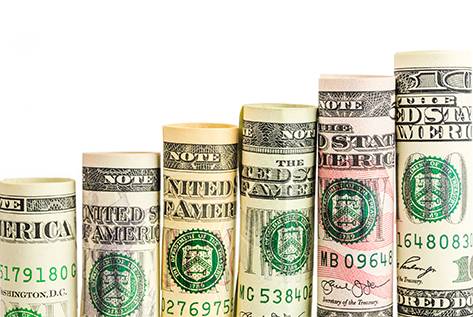The US dollar hovered near a two-week high against the euro and the British pound on Friday, as investors scaled back bets on an interest rate cut ahead of Federal Reserve Chair Jerome Powell’s speech at the Jackson Hole symposium.
The euro and the British pound recorded their weakest levels since early August, retreating by 0.1% to $1.1597 and $1.3408 respectively.
Earlier signs of weakness in the US labor market had boosted hopes for lower borrowing costs next month, but those expectations receded following stronger-than-expected economic data and cautious comments from Federal Reserve officials.
According to CME’s FedWatch tool, traders are currently pricing in a 73% probability of a 25-basis-point rate cut in September, down from 85.4% a week earlier.
Jane Foley, head of FX strategy at Rabobank, said: “The dollar is reflecting the risk that Powell sticks to his cautious stance and turns more hawkish.”
The dollar index, which measures the US currency against six major peers, rose 0.1% to 98.71, on track for a weekly gain of 0.9%, ending a two-week losing streak.
Federal Reserve officials appeared hesitant on Thursday regarding a rate cut next month, setting the stage for Powell’s speech scheduled at 10 a.m. Eastern (1400 GMT) during the annual conference in Jackson Hole, Wyoming, which began on Thursday.
Austan Goolsbee, president of the Chicago Fed, said the upcoming meeting was “open” and could bring a policy change, but he pointed to mixed economic data and unexpectedly high inflation readings that made him cautious about an imminent cut.
Charu Chanana, head of investment strategy at Saxo, added: “With inflation and jobs data still due before the September meeting, Powell has every reason to be patient and maintain flexibility.”
Analysts at Bank of America Global Research said the dollar has limited upside in the near term ahead of Jackson Hole, but maintained a bearish longer-term view given growing stagflation risks in the US economy. They noted: “The stagflationary environment, tariffs, and concerns over Fed independence and US institutions are all factors likely to drive the dollar lower eventually,” raising their year-end forecast for the euro to $1.20 from $1.17 previously.
The euro has gained 12% so far in 2025, supported by dollar weakness.
Elsewhere, the yen slipped to 148.56 per dollar, heading for a weekly loss of 0.9%. Data showed Japan’s core inflation slowed for the second consecutive month in July but remained above the central bank’s 2% target, keeping expectations of a rate hike alive in the coming months.
Japanese government bond yields tracked US Treasuries higher, with the 30-year yield hitting a fresh record high on Friday. The US 30-year Treasury yield stood at 4.9285% after a two-basis-point rise on Thursday, while the two-year yield, more sensitive to rate expectations, held at 3.79% after climbing 5 basis points in the previous session.
The Swedish krona and Norwegian crown slipped 0.2% against the dollar, while the Swiss franc held steady at 0.8093.


